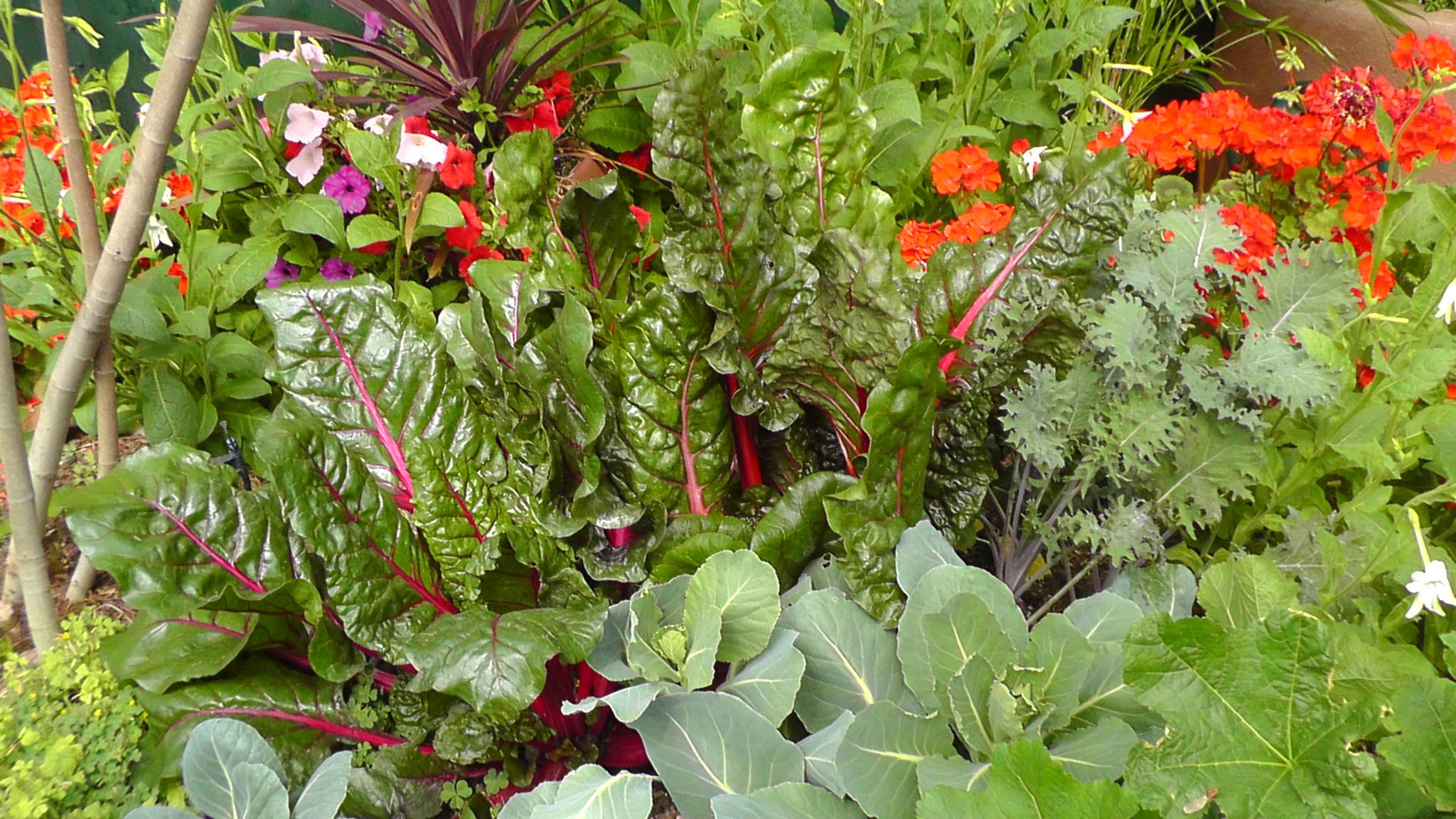There are many ways that people design their Growing Domes® for greenhouse gardening. One is to have raised planting beds, and the other is to enjoy container gardening. We have found that the raised bed greenhouse designs are the more successful method of securing optimum plant growth as the raised bed creates a much more stable thermal mass than container gardening. Growing Dome owners have found over the years that the plants in the containers tend to dry out much quicker and experience more extremes of temperature thus creating more stress and more potential problems with plant growth, pests and diseases in the green houses. Greenhouse gardening in raised beds is also much easier on the back as you don’t have to bend over to tend your plants! In considering some greenhouse garden designs for the Growing Dome, there usually is an outer raised bed, a circular pathway, and then an inner raised bed.
The beds in these greenhouse designs generally are anywhere between one and two foot high depending on the personal preference of the owner. The design and construction of the raised beds are entirely up to the owner’s imagination of how they want their Growing Dome to look. Over the years, we have found that owners of our Growing Spaces® greenhouse kits have used recycled plastic lumber, Douglas fir, redwood, plywood, sheet metal, adobe, rocks, and many other materials to create the walls for the raised beds in their greenhouse garden designs.
But container gardening can be useful in other applications. For example, transplanting vegetables from containers to raised beds can help increase yields. Schools also use containers so different class projects can easily be moved in and out of the greenhouse.
Greenhouse garden designs can include pathways made of bark chips, wood, gravel, and flagstone or brick pavers. In any greenhouse garden design, if there are large expanses of rock or brick which is not shaded, this can heat up quite significantly during the day creating overheating in the green houses. We have found that in order to maintain moderate temperatures, especially in the summer, that luxuriant plant growth helps to shade the soil and to keep the Growing Domes cool.
Greenhouse gardening in the Growing Dome works best if you garden with the seasons. The whole purpose of passive solar greenhouse garden designs is to use the ambient temperatures of the seasons to their optimum. Therefore, in the summer in our Growing Dome greenhouses, we grow heat-loving plants, such as tomatoes, squash, peppers, eggplant, cucumber, zucchini, melon, okra, basil, beans and many other varieties of plants and vegetables. In the winter, we grow cool hardy and cold tolerant plants and vegetables. Among these are members of the cabbage family: kale (leaf cabbage), collard, brussels sprout, broccoli, cauliflower, all the members of the onion family, garlic, leek, peas, lettuce, and root crops such as radish, rutabaga, turnips, beets, carrots and daikon (winter radish). Also spinach, swiss chard, Japanese greens (mizuna) and exotic greens such as tatsoi, bok choy, arugula and the mesclun mix type of greens grow very, very well in the Growing Dome greenhouses during the spring, fall and winter months.

Because our Growing Dome greenhouse kits are such energy efficient solar greenhouses, they can withstand 20 to 30 degree Fahrenheit temperatures outside the green house before it freezes anything inside the Growing Dome. Frost hardy plants in the solar greenhouses do survive well because even if they do freeze during the night, they will thaw as soon as the sun comes out and the plants will keep on producing throughout the coldest months of the year. Many people choose to grow a variety of organic vegetables, edible flowers, and herbs such as parsley, marjoram, thyme, sage, rosemary, dill, fennel, etc., in our geodesic green houses. These plants seem to grow equally well in both winter and summer as the Growing Dome greenhouses create a protected indoor garden for year-round enjoyment.